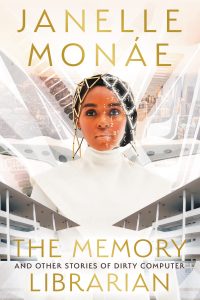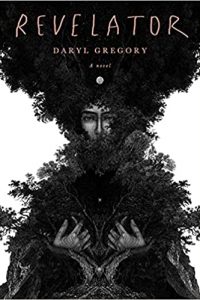Paul Di Filippo reviews Jason Gurley
Eleanor, by Jason Gurley (Crown, 978-1101903513, 384pp, hardcover) January 2016
 The trope of a domestic disturbance—a family crisis, a spousal tragedy—triggering a rift in normality, an imbalance in the natural harmony of life, an occult outbreak, is a potent and highly emotional one, capable of engendering great empathy and interest and identification among readers. After all, not all of us can occupy such mythic protagonist roles as savior, leader, warrior, explorer or chosen one, and play the starring part in great adventures in exotic locales. But all of us in our real lives do inhabit familial niches to varying intimate degrees: child, parent, spouse, sibling. These quotidian domestic relationships are imbued with great resonance and power. And when they go wrong, it seems natural and metaphorically appropriate to imagine the inner wrongness seeping into external reality.
The trope of a domestic disturbance—a family crisis, a spousal tragedy—triggering a rift in normality, an imbalance in the natural harmony of life, an occult outbreak, is a potent and highly emotional one, capable of engendering great empathy and interest and identification among readers. After all, not all of us can occupy such mythic protagonist roles as savior, leader, warrior, explorer or chosen one, and play the starring part in great adventures in exotic locales. But all of us in our real lives do inhabit familial niches to varying intimate degrees: child, parent, spouse, sibling. These quotidian domestic relationships are imbued with great resonance and power. And when they go wrong, it seems natural and metaphorically appropriate to imagine the inner wrongness seeping into external reality.
Such troubles of consanguinity serve as the engine in a wide spectrum of tales, to greater or lesser degree, from John Crowley’s Little, Big to Ray Russell’s The Case Against Satan, from Ian McEwan’s The Child in Time to Charles Stross’s Merchant Princes series. And certainly this motif is at the heart of Jason Gurley’s new book—which happens also to be one of those self-publishing success stories, being picked up by its current large house after an initial small-scale release.
We start in that far-off year of 1962, tracing the daily angst-filled life of a woman named Eleanor. Feeling stuck in a marriage which, if not loveless is still turbulent and clotted, Eleanor is sinking fast, unable to offer her young daughter Agnes the support she needs. The reader might flash on the woman’s gloomy namesake, “Eleanor Rigby,” of Beatles fame, especially due to the omnipresent motif of rain, which recurs in subsequent chapters. Eleanor’s life ends tragically, and we jump twenty years forward. Now, Agnes, married to Paul Witt, is a mother herself, to pre-adolescent twins named Esmerelda and Eleanor. And her life is about to be shattered by a death within the family circle.
Another disruptive jump of a decade, to 1993, as if Gurley were employing bold cinematic cutting techniques. Now Eleanor is a troubled teen, her father having left in the wake of the tragedy, which also reduced Agnes to an alcoholic. So far, we have been witness to a finely honed mimetic narrative, engaging in its depth of emotions. But now things are going to go strange.
One day in her high school cafeteria, Eleanor takes a single step and vanishes. From her POV she rematerializes instantly in a strange pastoral landscape. After observing the inhabitants there, she is transported, seemingly at random, back to her high school. Hours have passed on our Earth. Eleanor explains away the gap of her absence in a half-convincing manner. But the next translocation, from her bedroom to an apocalyptic landscape, for an interval of days, is impossible to wish or lie away. She must solve this condition, or be unable to live her life.
Meanwhile, we readers have been privy to the experiences of two beings outside normal time and space, a place dubbed “the Rift.” “In the rift, time is a boundless sky [from] the instant when your world was formed in the darkness…to the moment of its death, when it is consumed by your sun.” Our alien presences are Mea, a woman, and Efah, a man. Their nebulous roles as a sometimes contesting, sometimes cooperative cosmic dyad are teased out over many chapters. Not surprisingly, their focus appears to be a certain human named Eleanor Witt…
Continuing the naturalism of the early part of the book, Gurley escalates Eleanor’s occult troubles in a satisfying fashion, pushing her past the initial mere inconveniences to mortal danger. Throughout her tribulations, he takes the time to build her character in a deep manner. While not precisely a strictly YA perspective, Gurley’s stance towards Eleanor and her best friend Jack (who knows of her dilemma and is her sidekick in solving it) is fully immersed in all the angst and expectations and potential of the adolescent mindset. This book would surely cross over well between mature and intermediate audiences.
Once Eleanor understands the nature and desires of Mea and the Rift, she is given the opportunity to practice a kind of oneiric surgery to heal the wounds of her world. Her success is neither guaranteed nor without charges. Especially when one of the dreamscapes proves to contain an avatar of Agnes Witt, her mother, “a frail witch in a gutted wasteland.” And all dreamroads eventually lead back to where the whole tale began.
Ultimately, Gurley’s novel exhibits some of the transcendent but hardnosed New Age mysticism of Paulo Coelho’s work, hybridized with the gritty, pain-driven otherworldliness of Patrick Ness’s Chaos Walking series. As an example of the “as above, so below” theory of existential harmony and disharmony, it does its job with micro-machined precision.





